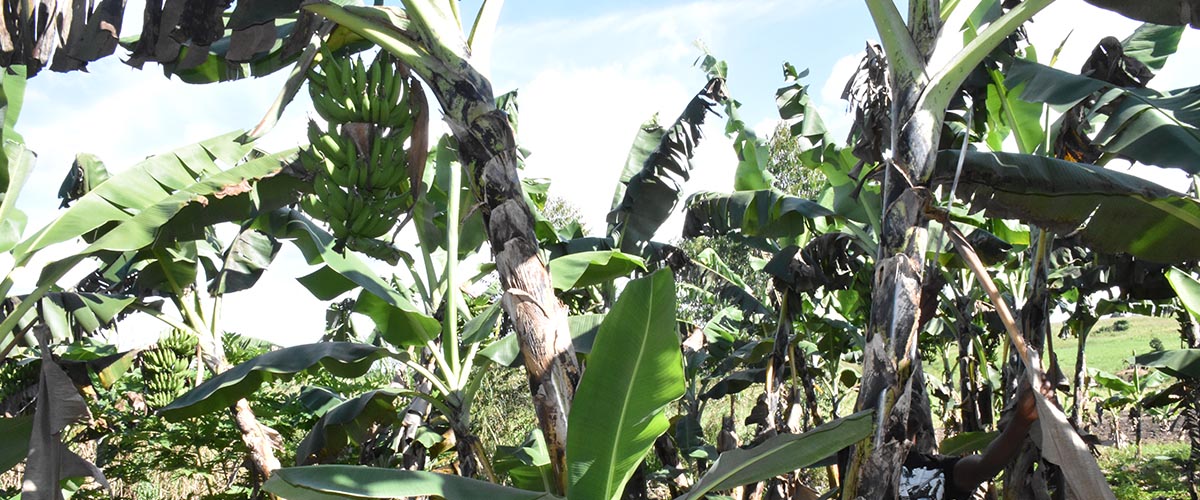BANANA PRODUCTION
Banana is one of the major crops that promote food security and household incomes. Most of the banana and its bi-products are consumed domestically. It, therefore, has high potential of creating wealth for farmers in many parts of the country. NAADS facilitates farmers to access high quality production inputs such as transgenic plants, fertilizers and herbicides.

How to establish a banana plantation
- Selecting a site
Select deep well-drained loam soil with high humus content. It is important to avoid acidic soils due to a lack of considerable amounts of nutrients.
- Preparing the field
Bananas can be planted on fallowed land or newly established fields.
On newly established fields, trees must be cut and some of the debris or obstacles from the forest, burnt.
On fallowed land, the field should be simply slashed and left without burning because of the useful organic matter in the soil.
A few days after slashing, the grass may be sprayed with herbicides to speed up organic matter breakdown.
After cultivation, a couple of weeks should be set aside to allow germination of weed seeds which are then killed in the next cultivation.
- Spacing and digging holes
The recommended spacing is 3 meters between the planting rows and 3 within the rows (3mX3m) or wider depending on soil fertility.
Rows should be straight in flat fields to give plants the maximum amount of sunlight. On slopes, rows should follow the contour lines to decrease soil erosion.
Planting holes should be prepared with a minimum size of about 30cm x 30cm x 30cm and most commonly 45cm x 45cm x 45cm to as big and deep as 60cm x 60cm x 60cm. the large and deep planting holes ensure that the roots of future plants exploit the greatest volume of soil and also the ability of plants to resist strong winds.
- Source and selection of planting materials
The planting material must come from a healthy disease and pest free plantation.
Planting materials may be obtained from the Tissue Culture Laboratory at Kawanda. The most commonly used planting materials are sword suckers, maiden suckers or corms. Sword suckers are the most preferred. They have an advantage of being less infected with nematodes and weevil than larger planting materials.
Suckers 1.8 to 2.1 meters high and 45 cm in girth should be selected for planting.
- Preparation of planting material
The bulb should be peeled to remove all roots and parts with damage (tunnels formed by weevil larvae or necrosis due to nematodes).remove the last leaf sheaths as they may house weevil eggs or adult weevils.
The brown and black spots that may appear on the corms due to weevil and nematode infestation should be removed until only white tissue remains.
If the infestation is severe with many brown and black spots, the sucker must be destroyed.
It is important to carry all this own far from the new field in order to avoid contamination.
- Planting
Planting can be done throughout the rainy season. However they should grow vigorously and without stress during the 4 to 6 months after planting and therefore shouldn’t be planted during the months of the rain season. The sucker is placed in the planting hole and its corm is covered first with the top soil and then the bottom soil.
In the planting hole, the sucker is tilted towards the edges of the hole.
If the land is sloping the sucker should be so oriented that the future ratoons emerge against the slope.
This will delay the ratoon crop from growing out of the soil exposing the corm, a condition called high mat.
Farmers are advised to use farmyard manure which is put in the planting holes several days prior to planting. Use of artificial fertilizers should be minimized as much as possible because of the high cost and inability of farmers to apply recommended quantities.






